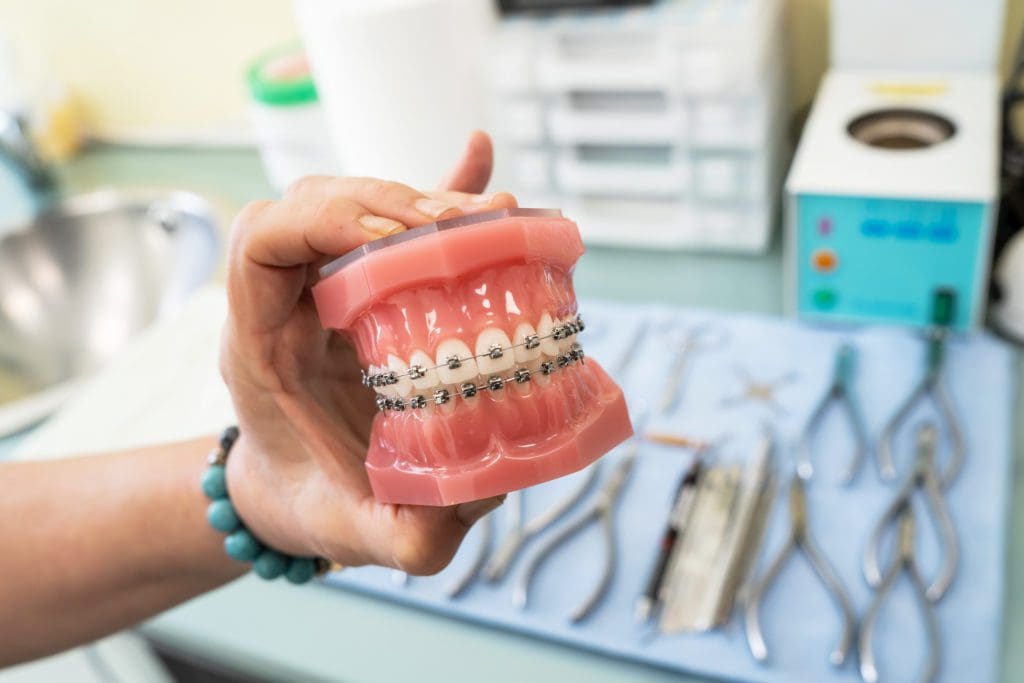Comprehensive Overview to Orthodontics Treatments for Fixing Oral Imbalances
In the world of orthodontics, the trip to achieving a completely lined up smile entails a myriad of procedures tailored to fix dental misalignments. From traditional braces to unseen aligners and even surgical alternatives, the area of orthodontics uses an array of options to resolve varying levels of oral abnormalities. Recognizing the details of each treatment, including their systems, benefits, and possible disadvantages, is crucial in making informed choices about one's orthodontic treatment. As we browse with the comprehensive guide to orthodontic treatments for dealing with oral misalignments, the intricate details of each technique will unfold, dropping light on the course towards a practical and unified dental placement.
Orthodontic Procedures Introduction

Normal adjustments and monitoring are essential parts of orthodontic treatment to guarantee development is on track and to make any type of required adjustments along the means. By undertaking orthodontic treatments, individuals can not just accomplish a straighter smile however also improve their overall dental wellness and feature.
Standard Dental Braces: Exactly How They Work
When thinking about orthodontic therapies for dental imbalances, standard dental braces attract attention as a tried and true method for correcting teeth positioning. Traditional braces include brackets, cords, and bands that collaborate to apply constant stress on the teeth, slowly relocating them into the preferred alignment. The brackets are connected to the teeth using an unique adhesive, and the cords are threaded with the braces. By adjusting the stress of the cords, orthodontists can manage the instructions and pressure related to each tooth, assisting them into appropriate positioning gradually.
As stress is used to the teeth via the dental braces, the bone bordering the teeth is improved to sustain the brand-new tooth placements. Patients will need regular adjustments at the orthodontist's office to guarantee the braces proceed to apply the appropriate pressure for reliable teeth activity.
Invisible Aligners: Advantages And Disadvantages
These clear, personalized trays are essentially undetectable when worn, making them an enticing choice for people seeking an extra aesthetically pleasing orthodontic therapy. Patients can eliminate the aligners prior to eating or cleaning their teeth, reducing the danger of food obtaining stuck in the home appliance and streamlining the cleaning over at this website procedure.

Surgical Orthodontic Options
Surgical interventions in orthodontics present viable options for dealing with complex oral imbalances that might not be properly solved via traditional orthodontic treatments. While conventional braces and invisible aligners can deal with numerous orthodontic problems, certain situations need surgical intervention to accomplish optimal outcomes. Surgical orthodontic alternatives are normally suggested for severe malocclusions, significant jaw disparities, and situations where the underlying bone structure needs adjustment to achieve appropriate positioning.
One common surgical orthodontic treatment is orthognathic surgery, which involves repositioning the jaws to correct practical issues such as difficulty chewing or talking. This surgery is usually carried out in collaboration with an orthodontist that helps line up the teeth before and after the procedure. Surgical orthodontics may also include procedures to subject impacted teeth, eliminate excess periodontal tissue, or improve the jawbone to produce a much more harmonious face profile.
Prior to considering surgical orthodontic alternatives, clients undertake an extensive analysis to determine the need and prospective advantages of such interventions. cumming braces. While surgical treatment might seem difficult, it can dramatically boost both the function and looks of the smile in instances where conventional orthodontic therapies fall short
Retainers and Post-Treatment Care

Failing to conform with post-treatment treatment instructions can result in relapse, where the teeth gradually relocate back in the direction of their original positions. Constant retainer wear, excellent dental health, and routine oral exams are important for preserving the outcomes achieved via orthodontic surgical treatment and guaranteeing the lasting security of the dealt with oral positioning.
Conclusion
In final thought, orthodontic treatments provide numerous options for remedying oral misalignments. Surgical orthodontic choices are available for a lot more extreme misalignments. On the whole, orthodontic procedures can efficiently boost dental health and wellness and visual appearance.
As we browse through the detailed overview to orthodontic procedures for fixing oral misalignments, the elaborate information of each method will unravel, losing light on the course toward a useful and unified dental alignment. - invisalign
One of the most usual orthodontic therapies is the usage of dental braces, which consist of metal brackets and cables that apply mild stress to progressively shift teeth into the desired setting.When thinking about orthodontic therapies for oral imbalances, traditional braces stand out as a time-tested technique for remedying teeth placing. In addition, unseen aligners might not be suitable for complicated orthodontic problems that need more considerable teeth motion, as they are commonly recommended for mild to moderate cases. Retainers are tailor-made orthodontic tools designed to hold teeth in their remedied settings after the conclusion of orthodontic therapy.